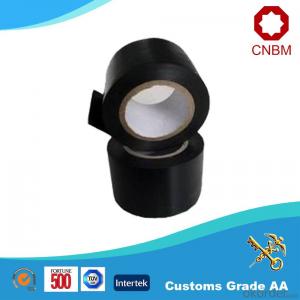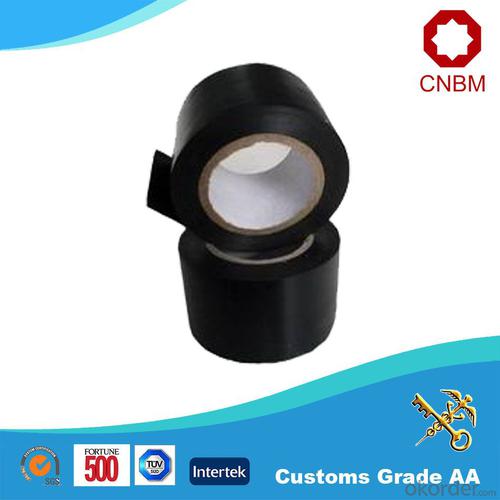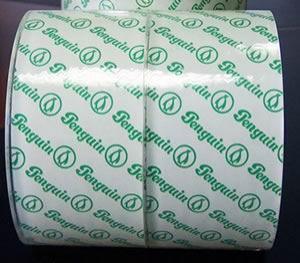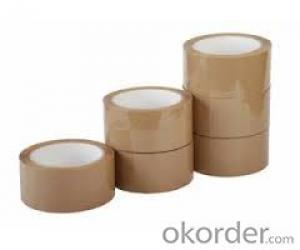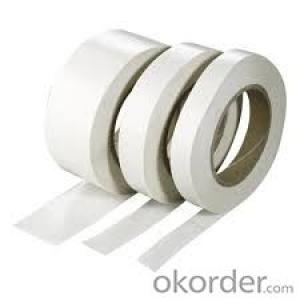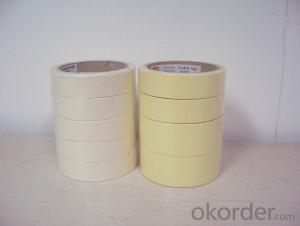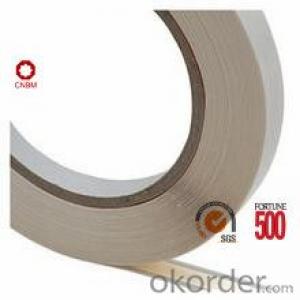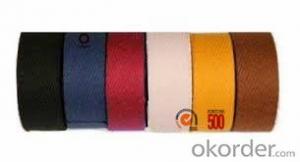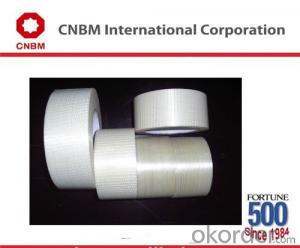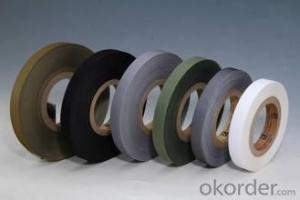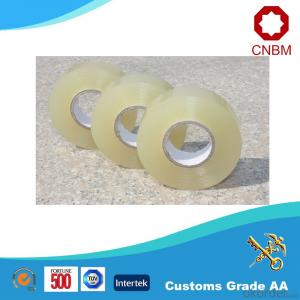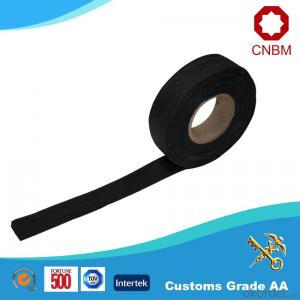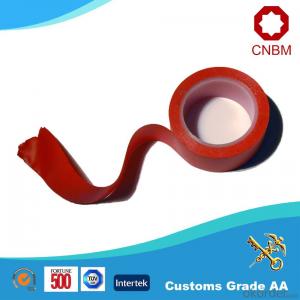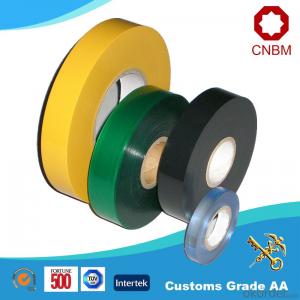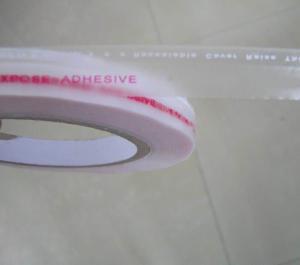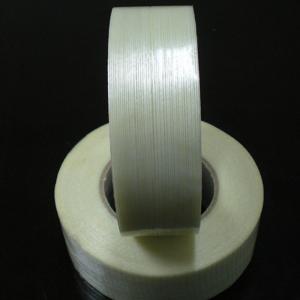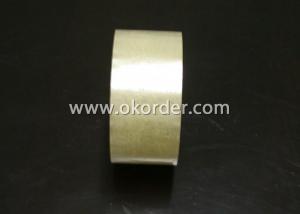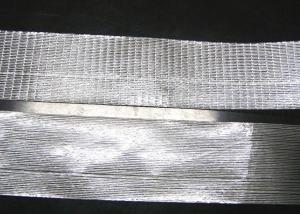Tape Logic 3 Inch PVC Wire Harness Tape Natural Rubber ISO9001 & SGS
- Loading Port:
- Tianjin
- Payment Terms:
- TT or LC
- Min Order Qty:
- 100 roll
- Supply Capability:
- 600 roll/month
OKorder Service Pledge
OKorder Financial Service
You Might Also Like
Specification
PVC Wire Harness Tape Natural Rubber ISO9001&SGS
1. Structure of PVC WIRE HARNESS TAPE Description
PVC Wire Harness Tape is of PVC film as the carrier, coating with rubber based adhesive. It is excellent in flame retardant, high temperature stability, and anti-aging. It provides well insulation to automotive products.
The thickness of the tape can be customized.
2. Main Features of PVC Wire Harness Tape
Excellent in adhesion
Flame retardant
Resistance to cold, heat and aging.
High Temperature stability
3. PVC Wire Harness Tape Images
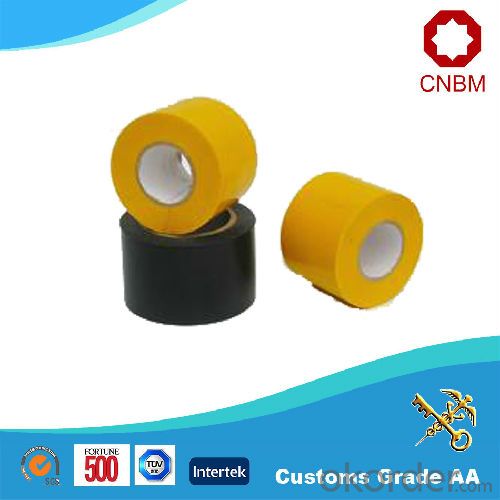
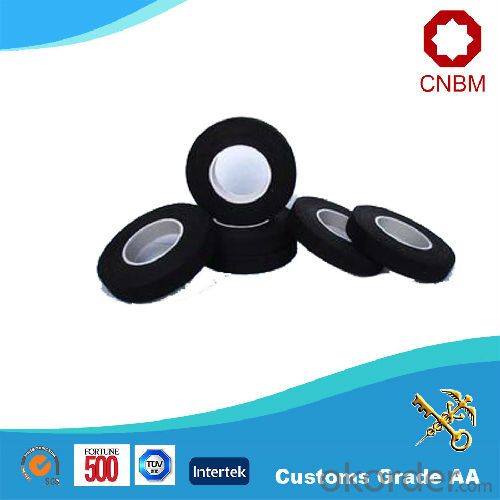
4. PVC Wire Harness Tape Specification
Item No. | Thickness (micron) | Adhesion (N/cm) | Tensile Strength (N/cm) | Elongation at Break (%) | Vlotage Breakdown (KV/mm) | Temperature Resistance (DC) | Flammability (s) |
WH-10 | 0.25 | 1.2 | 75 | 15 | - | - | -40-105 |
5. FAQ
Q1. What is the standard sizes?
19mm*20m
19mm*25m
Q2. What is the service?
Sample of PVC Wire Harness Tape is available.
Your inquiry will be replied within 12 hours.
Well-trained & experienced sales representative are ready to answer you.
Q3. Who are we?
CNBM International Corporation (CNBM International) is a state-owned company and we have sound business relations with clients from over 120 countries. Currently, we have wholly-owned overseas subsidiaries and branches in 5 countries with a view to realize localization, which also represents an essential progress in our globalization target.
- Q: How do I store packaging tape?
- To store packaging tape, it is best to keep it in a cool, dry place away from direct sunlight and extreme temperatures. A drawer, cabinet, or a dedicated storage box would work well to prevent the tape from getting damaged or losing its adhesive properties. It is also advisable to keep the tape in its original packaging or use a tape dispenser to keep it organized and easily accessible when needed.
- Q: Can packaging tape be used for sealing packages with electronic components?
- Yes, packaging tape can be used for sealing packages with electronic components. However, it is important to ensure that the tape used is anti-static or ESD (electrostatic discharge) safe, as regular packaging tape can generate static electricity and potentially damage the sensitive electronic components.
- Q: What are the considerations for using packaging tape on painted surfaces?
- There are several important factors to keep in mind when contemplating the use of packaging tape on painted surfaces. First and foremost, it is crucial to evaluate the type and condition of the paint on the surface. If the paint is old, flaking, or in poor condition, applying packaging tape could result in further damage, such as peeling or chipping. In such cases, it is advisable to refrain from directly using tape on the painted surface. Another significant aspect to consider is the adhesive strength of the packaging tape. Certain tapes possess strong adhesives that may firmly stick to the painted surface, making it difficult to remove without harming the paint. It is recommended to conduct a test on a small, inconspicuous area with the tape to ensure that it can be safely removed without leaving any residue or causing any harm. Furthermore, it is crucial to take into account the duration for which the tape will be applied. If the tape is intended to remain on the painted surface for an extended period, there is a higher risk of it causing damage. Over time, the adhesive may bond more strongly with the paint, making it harder to remove without causing any harm. Additionally, the surface texture plays a role in determining the suitability of using packaging tape. Rough or uneven surfaces may prevent the tape from adhering properly, leading to lifting or peeling, which can damage the paint. Lastly, it is essential to consider the purpose of using packaging tape on the painted surface. If the objective is to safeguard the paint from scratches or damage during transportation or storage, alternative methods, such as using protective sheets or bubble wrap, may be more appropriate and less likely to harm the paint. In conclusion, when contemplating the use of packaging tape on painted surfaces, it is necessary to assess the type and condition of the paint, adhesive strength, duration of application, surface texture, and purpose. By taking these considerations into account, one can ensure the safe use of tape without causing any damage to the painted surface.
- Q: For the moment the yellow rubber stamp [] how to use paper and pen, pen parts packaging tape?
- If the mud is in small yellow, it's better to put some tape around your fingers and wrists...
- Q: Can packaging tape be used for sealing cosmetic or beauty products?
- Yes, packaging tape can be used for sealing cosmetic or beauty products. However, it is important to note that the type of packaging tape used should be suitable for the specific requirements of the product. For example, if the cosmetic or beauty product is sensitive to heat or moisture, it may be advisable to use a specialized tape that offers greater protection against these factors. Additionally, it is crucial to ensure that the packaging tape used is safe for use on the skin or any other part of the body, as some tapes may contain adhesives or materials that could cause irritation or allergic reactions. Therefore, it is recommended to carefully consider the specific needs of the cosmetic or beauty product and choose a packaging tape that meets those requirements effectively and safely.
- Q: What are the alternatives to packaging tape?
- Some alternatives to packaging tape include adhesive-free packaging solutions like interlocking flaps, self-sealing envelopes, or Velcro straps. Additionally, eco-friendly options like paper-based or biodegradable tapes can be used.
- Q: Can packaging tape be used for sealing plastic folders?
- Yes, packaging tape can be used for sealing plastic folders.
- Q: Is packaging tape safe to use on delicate items?
- The safety of using packaging tape on delicate items varies depending on the type of tape and how it is applied. Certain packaging tapes are specifically made for delicate items, minimizing the risk of damage through features like low tack adhesive or gentle release properties. These tapes, commonly known as "low-tack" or "gentle" tapes, are often transparent. When using packaging tape on delicate items, it is crucial to apply it carefully and securely, avoiding excessive force or pressure. It is recommended to test the tape on a small, inconspicuous area of the item first to ensure it does not cause harm or leave residue. Moreover, it is advisable to wrap delicate items with protective materials like bubble wrap or tissue paper before applying the tape. This extra layer of cushioning and protection can be beneficial. If you are uncertain about the safety of using packaging tape on a specific delicate item, it is always best to consult with the manufacturer or seek professional advice. They can provide guidance on the most suitable packaging materials and methods to ensure the safety of your delicate items during transit or storage.
- Q: As for the title, just bought the tape cutter, but I don't know how to use it. I bought it in plastic. Used for packing express boxes. It's better to use a process chart for me to see.. Thanks。。 Or clear words can also...
- Strip the tape first. Put your head in the cutting edge. Put the tape in the middle of the sealing machine.
- Q: Which kind of sealing tape is solvent resistant?
- Insulation properties are greatly improved with specifications (0.05mm-0.08mm) * various widths and lengths. The aluminum foil tape matches the joint of all the aluminum foil composite materials, the sealing of the puncture point of the heat preservation nail and the repair of the damaged part
Send your message to us
Tape Logic 3 Inch PVC Wire Harness Tape Natural Rubber ISO9001 & SGS
- Loading Port:
- Tianjin
- Payment Terms:
- TT or LC
- Min Order Qty:
- 100 roll
- Supply Capability:
- 600 roll/month
OKorder Service Pledge
OKorder Financial Service
Similar products
Hot products
Hot Searches
Related keywords
